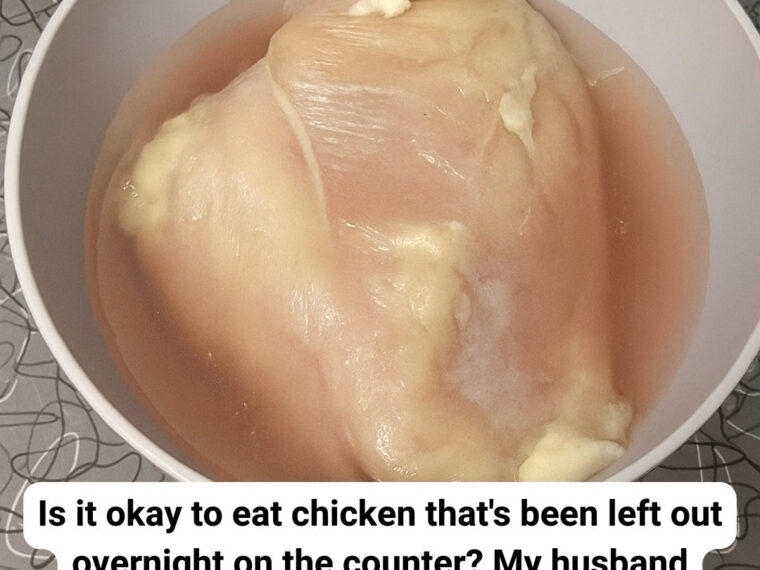When life gets busy, it’s easy to forget a dish on the counter — whether it’s chicken cooling after dinner, leftovers waiting to be stored, or grocery items that accidentally sat out longer than planned. Many people shrug and say, “It’s fine, I’ve eaten food like that before.” But when it comes to chicken, this habit can be extremely risky — especially for children.
Food safety experts all agree:
Chicken left out at room temperature overnight should never be eaten.
Even if it looks, smells, or tastes completely normal, the danger isn’t always visible.
In this article, we’ll explore why chicken left out too long becomes unsafe, what actually happens to it, and the safest ways to store poultry to protect your family.
Why Time and Temperature Matter
Chicken is one of the most sensitive foods when it comes to bacterial growth. The rule of food safety is simple:
🚫 Two Hours = Maximum Safe Limit
Chicken — raw or cooked — should not sit out for more than 2 hours at room temperature.
If the room is warm (above 32°C / 90°F), the limit drops to 1 hour.
Why? Because bacteria thrive in the danger zone, a temperature range between:
5°C and 60°C (40°F to 140°F)
Inside this range, bacteria multiply at high speed, potentially doubling every 20 minutes. That means the longer chicken stays out, the more dangerous it becomes.
Leaving chicken out overnight means it has spent 8–12 hours — or more — in the perfect environment for harmful microbes to multiply uncontrollably.
The Invisible Threat: Bacteria You Can’t Detect
Many people believe the myth that spoiled food always smells bad or looks strange. Unfortunately, that’s not how foodborne bacteria work.
The most common bacteria that grow on unrefrigerated chicken include:
-
Salmonella
-
Campylobacter
-
E. coli
-
Staphylococcus aureus
-
Clostridium perfringens
These pathogens can cause severe gastrointestinal illness — and they don’t change the chicken’s smell, color, or texture in a way you can easily detect.
In other words:
Chicken can look fresh and still be dangerous.
Can Heating It Kill the Bacteria?
Many people assume reheating makes any food safe. This is a misunderstanding.
Reheating kills bacteria — but not their toxins.
Some bacteria, like Staph aureus, produce heat-resistant toxins that stay in the food even after reheating. These toxins can cause:
-
Sudden vomiting
-
Diarrhea
-
Stomach cramps
-
Dehydration
So even if you cook the chicken again, boil it, or fry it, the toxins remain active.
Why Children Are at Higher Risk
While food poisoning is dangerous for everyone, children are especially vulnerable because:
-
Their immune systems are still developing
-
They become dehydrated much faster
-
They may not communicate symptoms clearly
-
They can suffer long-term complications
This is why experts emphasize extra caution for households with kids.
What Happens If Someone Eats Chicken Left Out Overnight?
Symptoms may appear anywhere from 30 minutes to 48 hours after eating the contaminated chicken. They can include:
-
Nausea
-
Vomiting
-
Diarrhea (sometimes severe)
-
High fever
-
Abdominal cramps
-
Headaches
-
Weakness
-
In rare cases, hospitalization
Most cases resolve on their own, but some infections — especially Salmonella — can lead to serious complications and require medical treatment.
Why Some People Think “It’s Fine”
You may hear people say:
-
“We used to eat leftovers all the time.”
-
“Nothing ever happened to me before.”
-
“It still smells good, so it must be okay.”
The truth is, food poisoning isn’t guaranteed every time, but it only takes one exposure to cause a severe illness.
Think of it like driving without a seatbelt — you might survive many trips, but one accident can change everything.
How to Store Chicken Safely
continue reading in page 2





